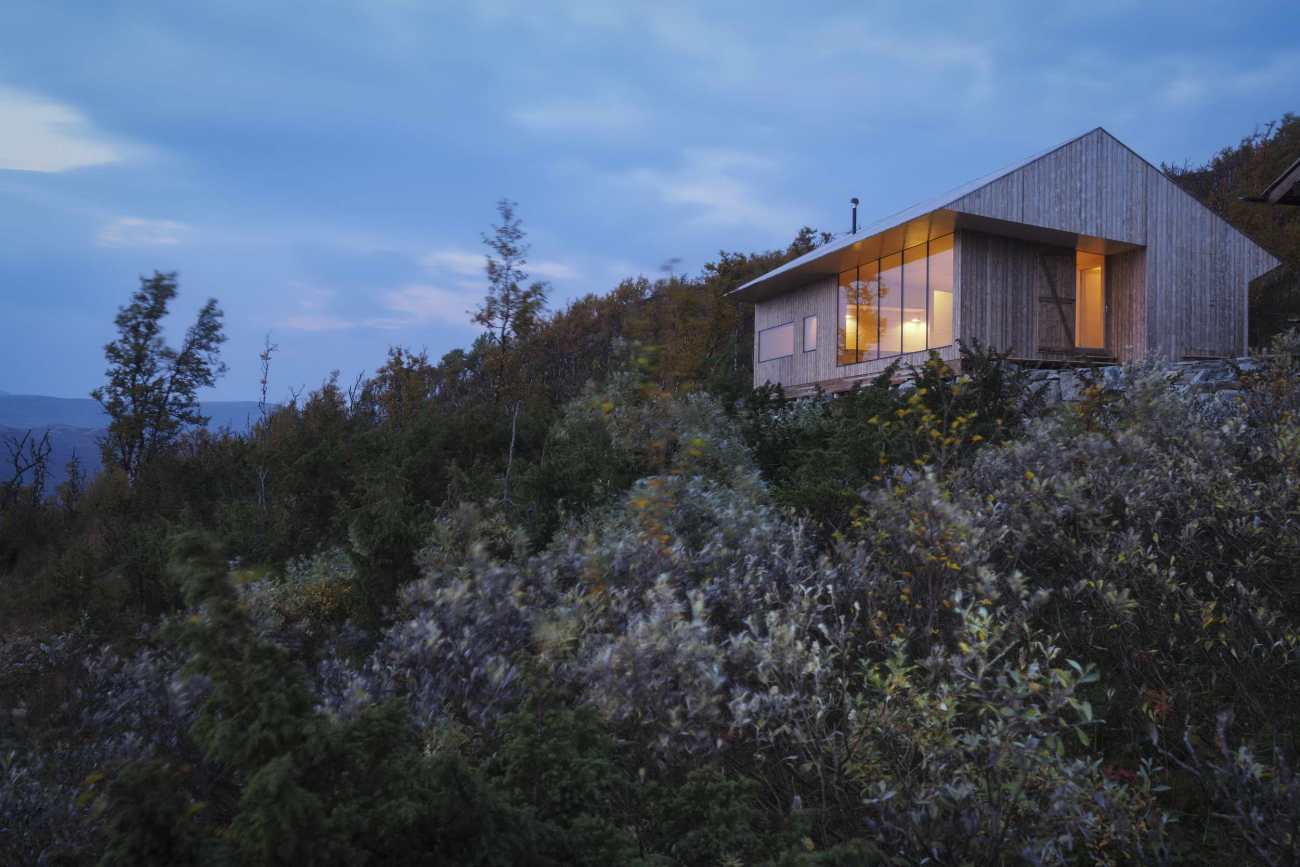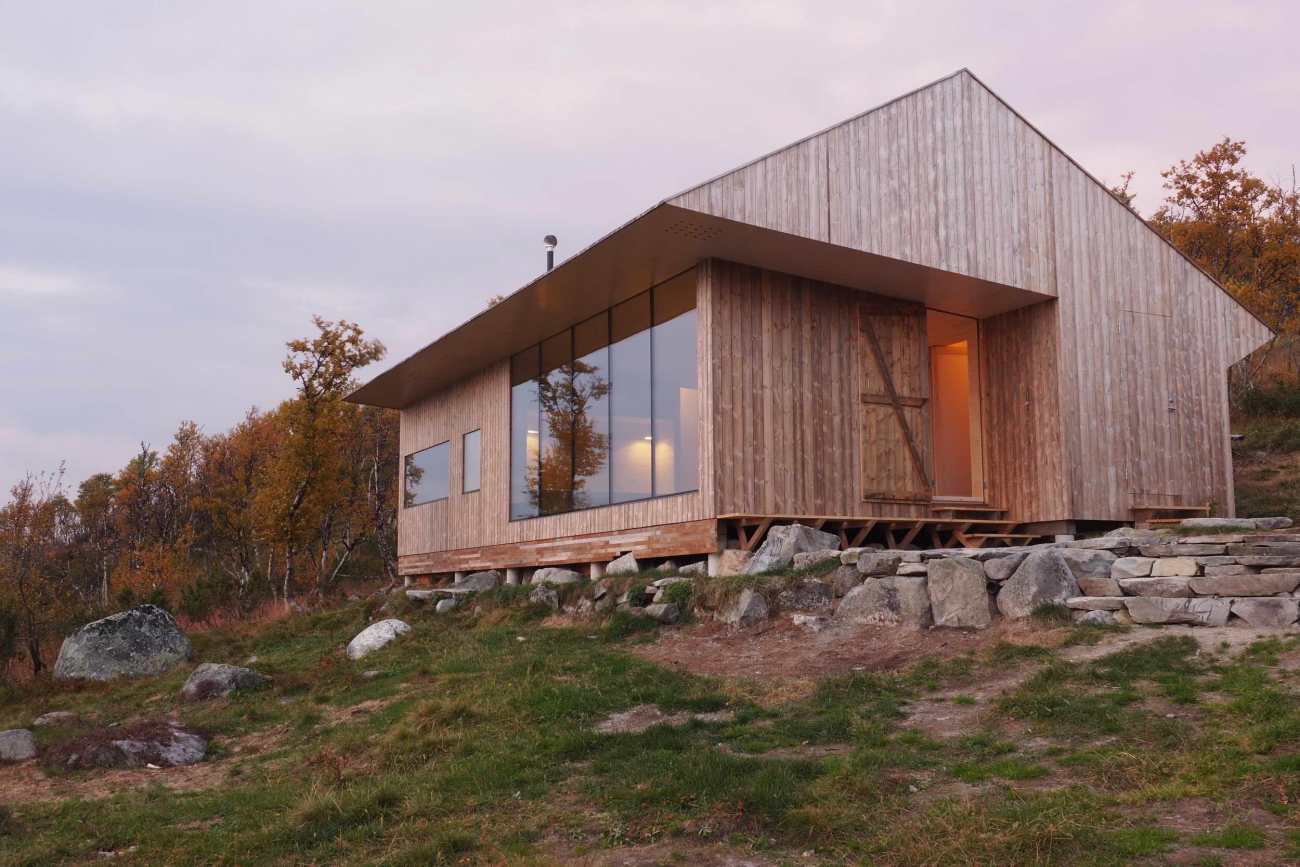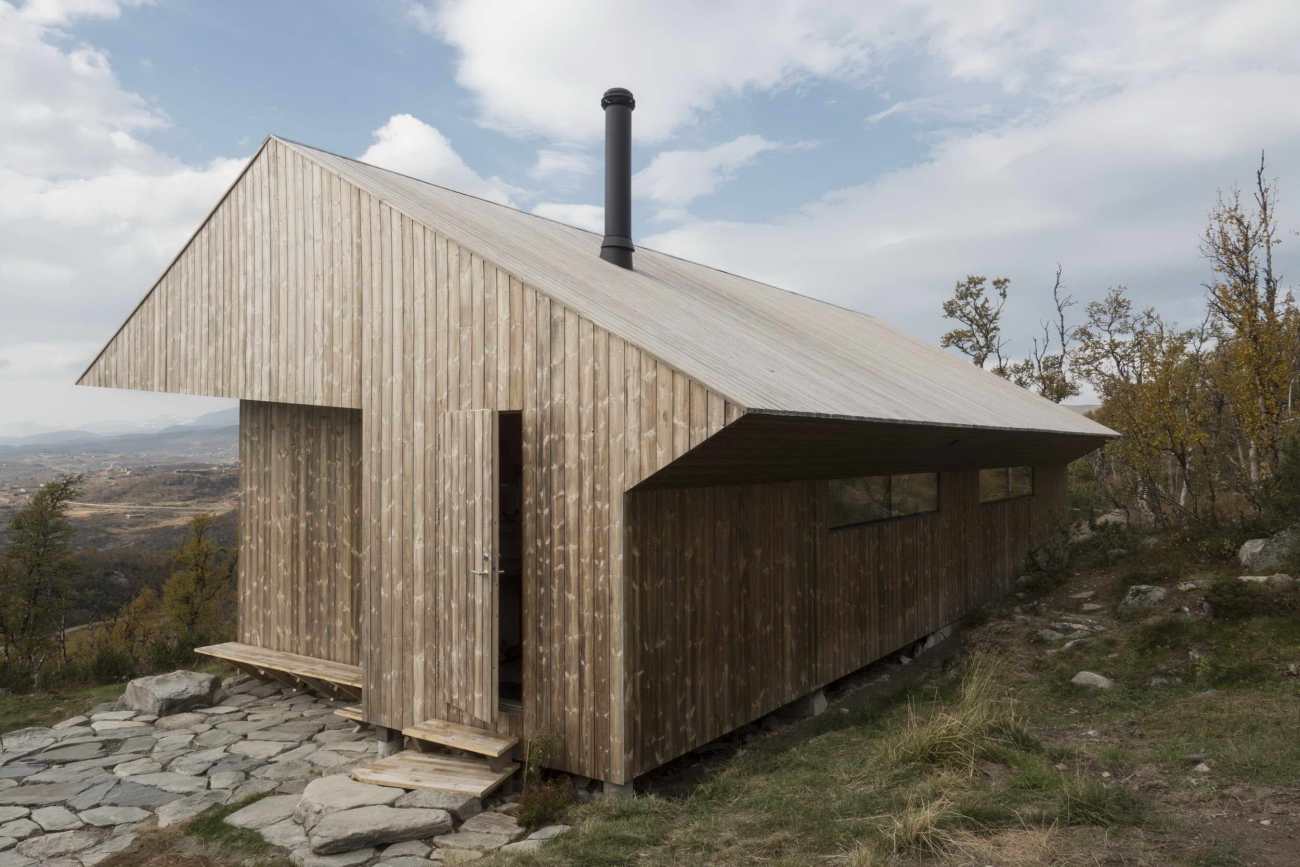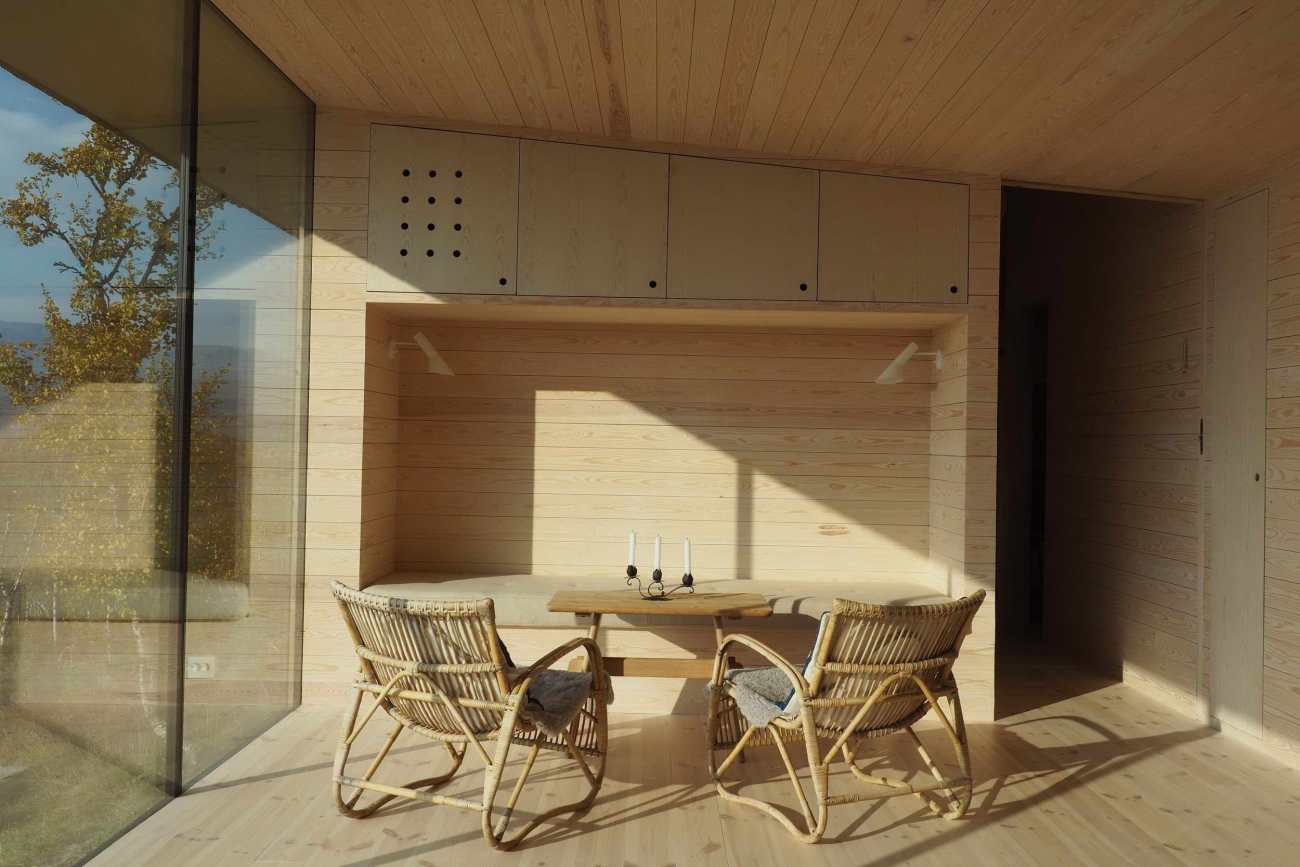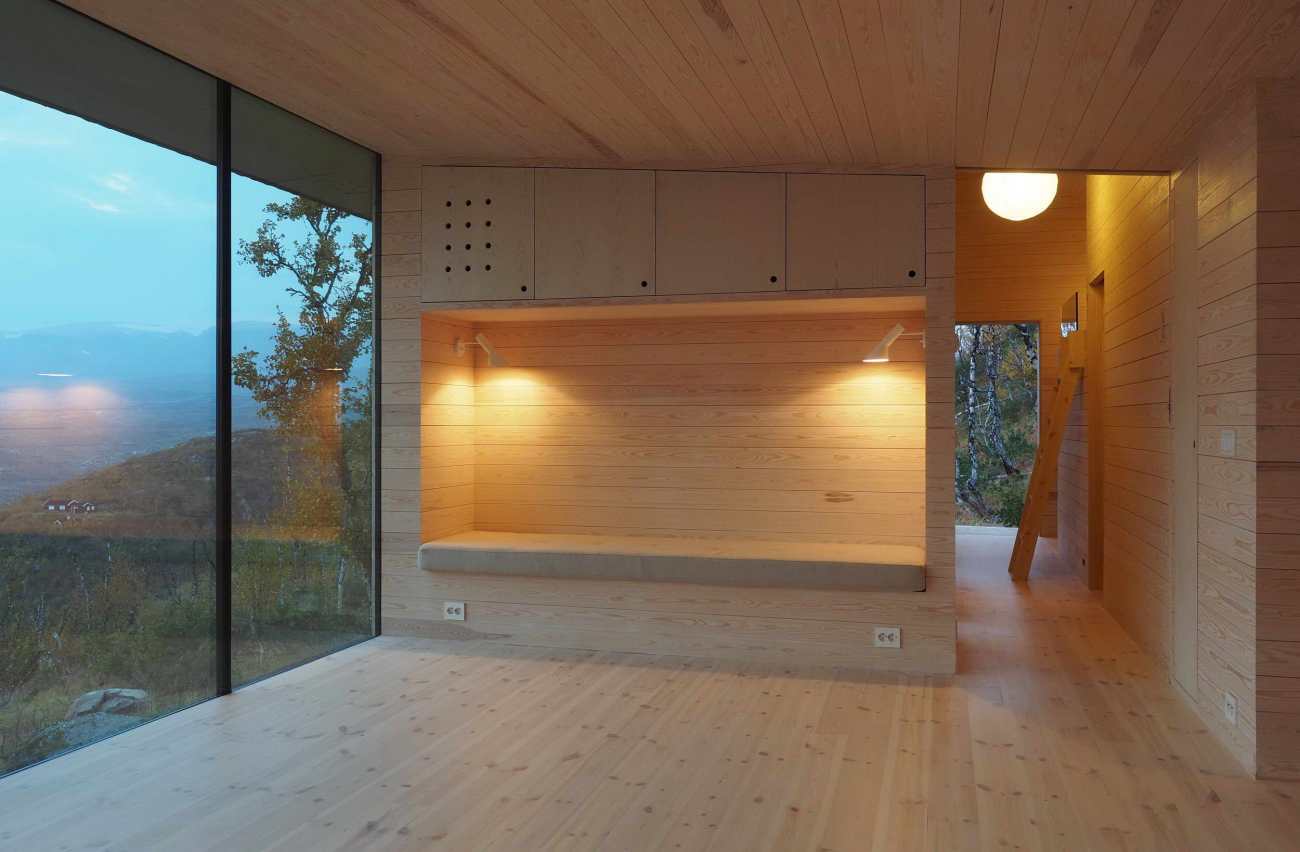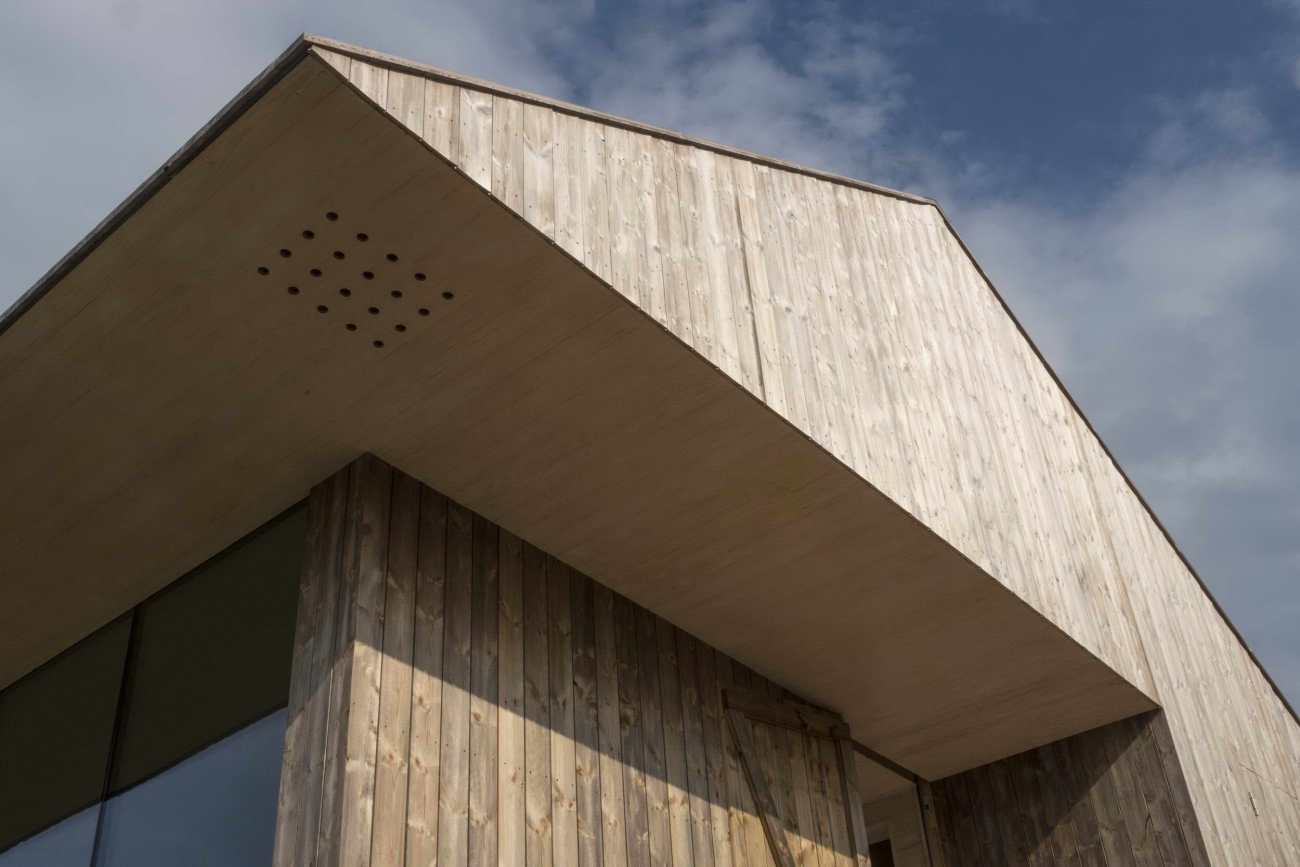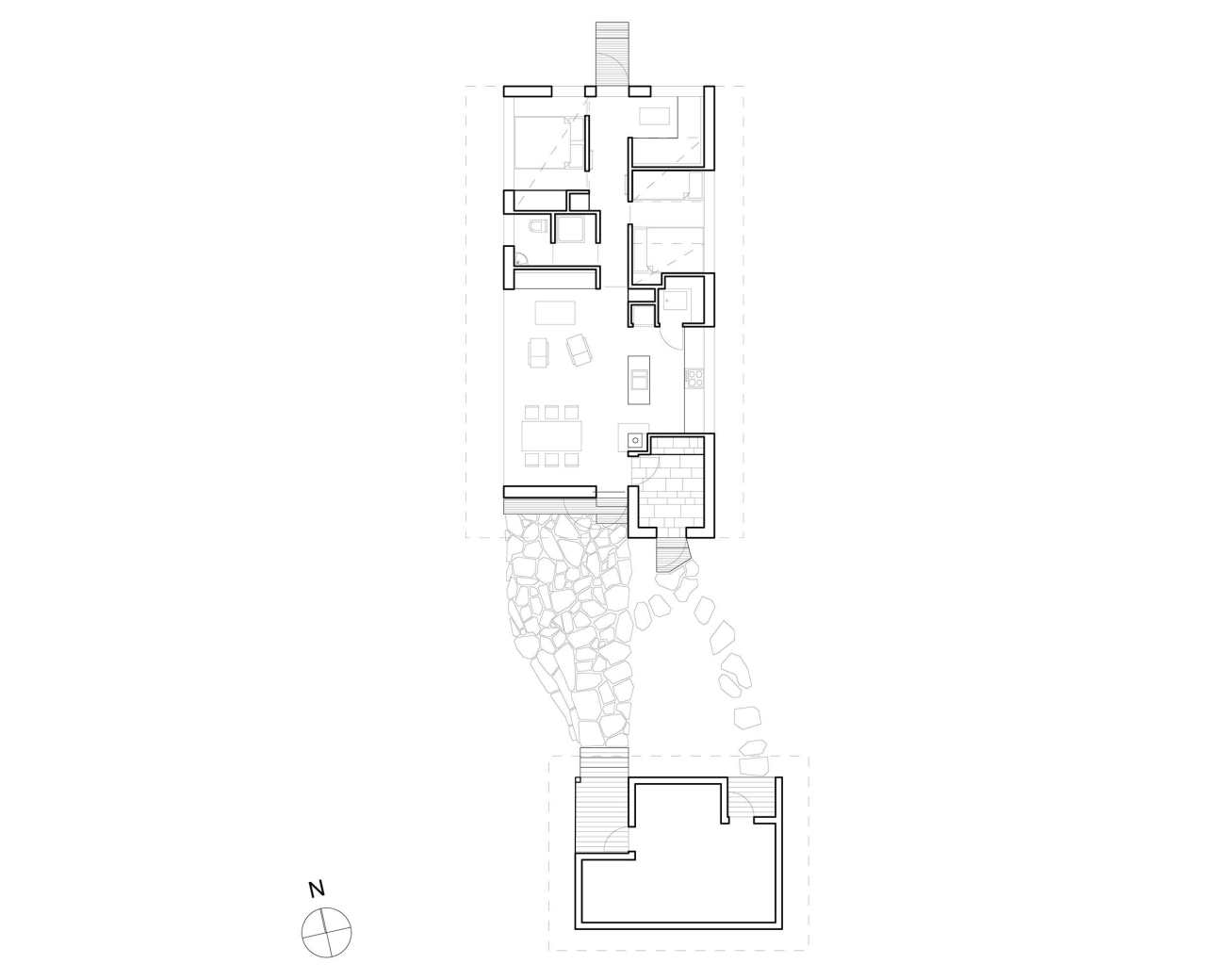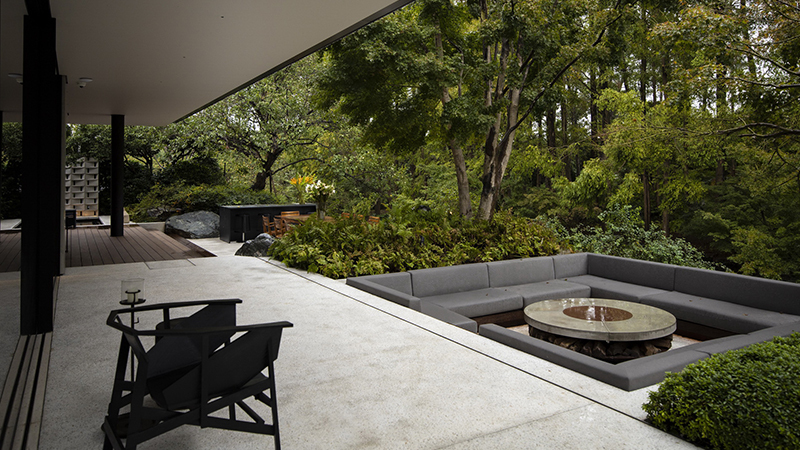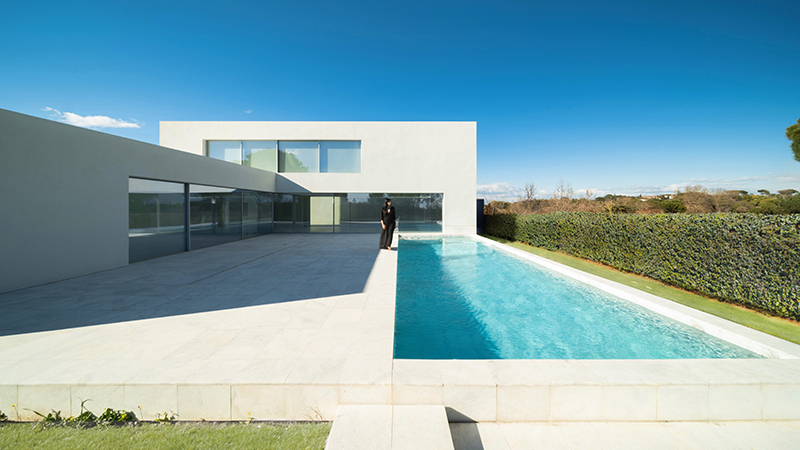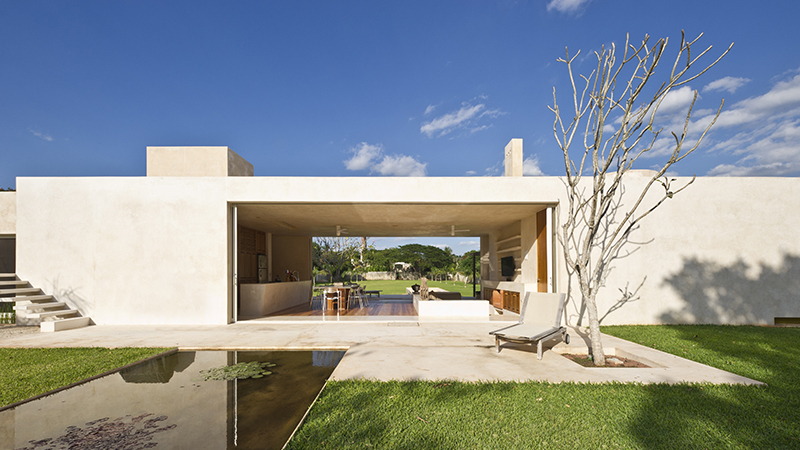| 公司: | Jon Danielsen Aarhus Architect | 类型: | 建筑 |
|---|---|---|---|
| 地区: | 挪威 | 标签: | 别墅私宅 |
一年四季都可以使用的小屋。位于海拔1066米的奥斯陆和卑尔根之间,位于欧洲最伟大的高原之一--哈当格维达山脚下。由于没有道路连接,建筑材料是用直升机空运过来的。地基工程是由人工完成的,以保护挪威如此高海拔地区生长缓慢的植被。地基由立在基岩上的柱子组成。建筑物的外部工程必须在短暂的夏季完成。其余的部分则在冬季中完成,届时可以用雪地车将内部材料运入。
A cabin for use all year. Situated 1066 meters above sea level, mid-way between Oslo and Bergen, at the foot of the mighty Hardangervidda – one of the greatest mountain plateaus in Europe. With no road connection, materials for the build was flown in with helicopter. The groundworks were done manually to preserve the slow-growing vegetation one finds at such altitudes in Norway. The foundation consists of pillars standing on the bedrock. The outside of the building had to be finished during the short summer months. The rest was completed mid-winter, when materials for the interior could be transported in with snow scooter.
小屋内外都用松木覆盖,三层隔热和防晒的玻璃板将Ustevann湖、Hallingskarvet山脉和Hardangerjøkulen冰川的景色尽收眼底。
The cabin is clad in pine, inside and out. 3-layer, insulating and solar protected glass panels take in the view of the Ustevann lake, Hallingskarvet mountain formation and Hardangerjøkulen glacier, all in the same panorama.
考虑到这一景观,主厅的设计理念是创造一种置身于室外的体验--暴露在不断变化的风景中。为了达到这个目的,整个面向景观的墙面都是由玻璃制成。天花板是倾斜的,试图让房间更加开放。倾斜的天花板,结合"开放"的墙面,消防了gapahuk风格,这是一种挪威乌尔式的登山时使用的简易庇护所:两根柱子,上面有一根水平的原木,上面靠着一层树枝,形成一个临时的屋顶,并将结构的一侧打开。
With this view in mind; the idea for the main room was to create the experience of being outside – exposed to the shifting scenery. To achieve this, the entire view-facing wall is made of glass. The ceiling is angled, attempting to "explode" the room even more. The tilted ceiling, in combination with the “open” wall, alludes to the gapahuk, a Norwegian ur-type of improvised shelter used when hiking: two posts with a horizontal log on top, and a layer of branches leaning on it, making a makeshift roof and leaving one side of the structure open.
所述的天花板上方是一个用于储藏的阁楼。小木屋总共有5个可以睡觉的房间,2个卧室,1个组合客厅和卧室,以及2个阁楼。室内门上的聚碳酸酯填充物让光线渗透进来。
Above the ceiling mentioned is an attic for storage. The cabin has altogether 13 sleeps (2 bedrooms, 1 combined living room and bedroom, and 2 lofts). Polycarbonate fillings in the interior doors let light seep through.
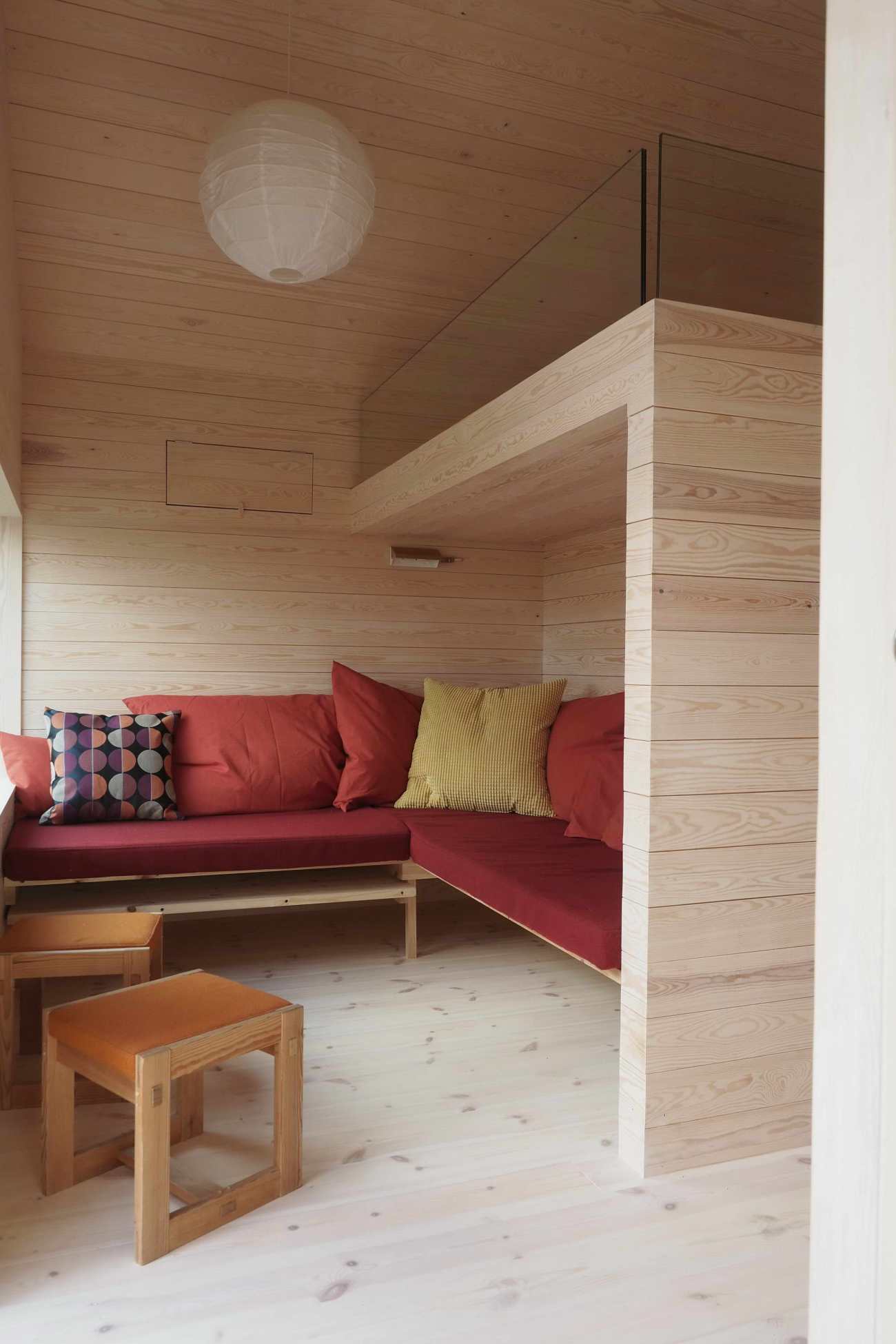 | 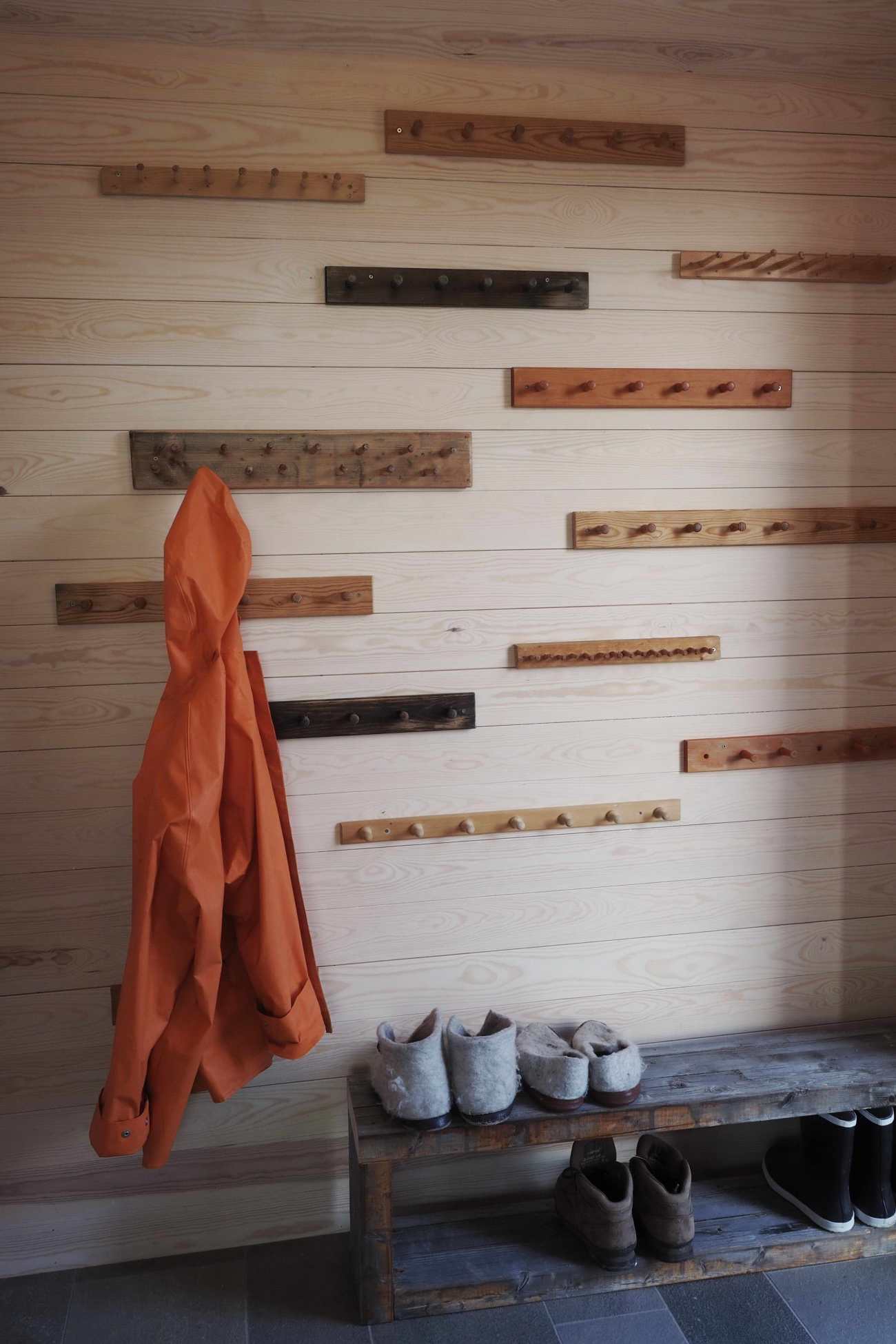 |
以前的一间29平方米的小屋现在作为附属建筑,和新的小屋一起创造了一个遮蔽的外部空间。主入口朝向主导风向,以避免积雪堆积在建筑的另一侧,所以这里的窗户被放置得相当高。在西立面的柱子前,有一面用再生木材制成的阻挡墙,用来防止绵羊从建筑下面进入。屋檐很好地防止了夜晚从天而降的霜冻落在窗户上——在特定温度下,中空玻璃就会出现这个问题。由于没有窗户可以打开,屋檐也隐藏了通风的开口。
A previously existing cabin of 29 m2 now functions as an annex, and together with the new cabin creates a sheltered outside space.The main entrance is placed toward the dominant wind-direction, to keep it clear of snow which will accumulate on the opposite side of the building, so the windows here are placed rather high up. A blocking wall made from reclaimed wood, in front of the pillars on the west facade, is there to prevent sheep from getting in under the building. The eaves are generous to keep frost, falling from the sky at night, away from the windows - which can be a problem with insulating glass at certain temperatures. As no windows open, the eaves also conceal openings for ventilation.
 |  |
▽平面图 Plan
▽剖面图 Section
▽剖面图 Section
Project title: Cabin Ustaoset
Architect: Jon Danielsen Aarhus Architect
Website: www.jdaa.no
E-mail: jon@jdaa.no
Area (inside space): 72m2
Completion year: 2016
Location: Hol municipality, Norway
Contractor: TG-Bygg, Geilo
Photographs: Knut Bry
更新日期:2020-11-12 15:35:02
非常感谢 Jon Danielsen Aarhus Architect 带来的精彩项目, 查阅更多Appreciations towards Jon Danielsen Aarhus Architect for sharing wonderful work on hhlloo. Click to see more works!

